This article provides an in-depth review of thermoplastic materials in dentistry, classifying them by chemical structure rather than by brand or clinical use. It explores the mechanical, biological, and aesthetic properties of nylon, polypropylene, POM, methyl methacrylate, and PEEK, offering dental professionals insights for smarter, safer material selection in modern prosthetics.
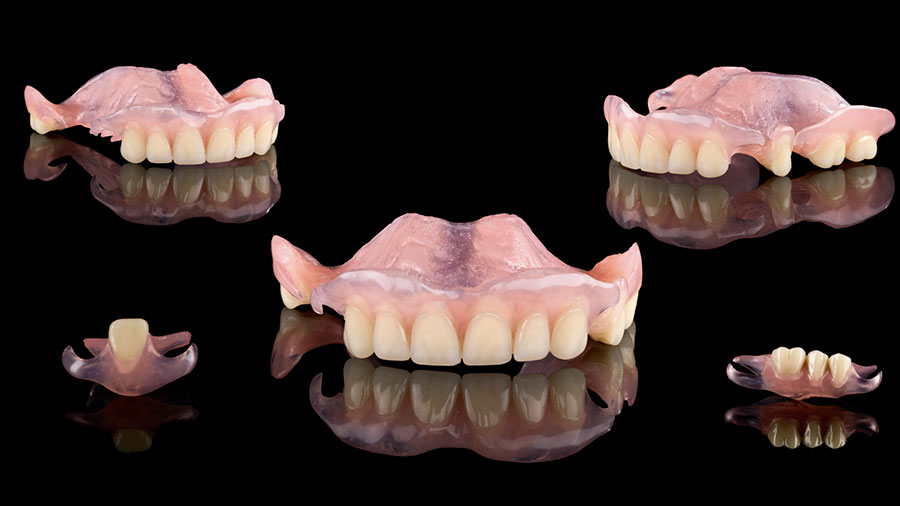
Table of contents [Show]
- Abstract
- Introduction
- Brief Overview Of Thermaplastic Material
- Polyamide (Nylon) In Thermoplastic Materials
- Polypropylene (PP) in Thermoplastic Materials in Dentistry
- Disadvantages
- Examples of Polypropylene-Based Dental Materials
- Polyoxymethylene (POM) in Thermoplastic Materials in Dentistry
- Methyl Methacrylate (MMA)–Based Thermoplastic Materials in Dentistry
- Polyetheretherketone (PEEK) in Thermoplastic Materials in Dentistry
- Conclusion
Abstract
Thermoplastic materials in dentistry have become a cornerstone of modern prosthodontics, offering superior aesthetics, flexibility, and patient comfort compared to traditional acrylic resins. Over the past two decades, the field has rapidly evolved with the introduction of advanced polymers such as nylon (polyamide), polyoxymethylene (POM), polypropylene (PP), methyl methacrylate–based thermoplastics (MMA), and polyetheretherketone (PEEK). Each material presents distinct advantages and limitations in terms of strength, flexibility, chemical stability, and repairability, making material selection a critical factor in dental lab production.
This article provides a comprehensive overview of the most commonly used thermoplastic materials in removable and fixed dental prostheses, analyzing their mechanical, biological, and aesthetic properties. It also compares their clinical performance, processing technologies (such as injection molding and CAD/CAM milling), and practical considerations for dental laboratories.
By understanding the characteristics and appropriate applications of each thermoplastic, dental professionals can optimize treatment outcomes, improve workflow efficiency, and choose materials that align with both patient comfort and long-term durability. Among emerging options, PEEK stands out as a high-performance polymer that combines biocompatibility, strength, and flexibility, representing the next step in modern dental prosthetics.
Introduction
In recent years, the global dental industry has witnessed a significant rise in the demand for removable and fixed prosthetic treatments. Despite advances in preventive care and restorative techniques, the prevalence of tooth loss and oral diseases remains substantial, driving continuous innovation in dental material science. Among the most transformative developments is the growing adoption of thermoplastic materials in dentistry, a new class of polymers offering exceptional flexibility, strength, and biocompatibility.
Traditional materials such as acrylic resins, while long established, often fall short in meeting the modern standards of aesthetics, comfort, and durability required by today’s patients. Imperfect material selection and outdated processing technologies can lead to structural deformation, microbial accumulation, and discomfort, ultimately compromising both oral health and patient satisfaction. This has prompted dental laboratories worldwide to explore alternative materials capable of balancing mechanical performance with biological safety.
Thermoplastic polymers have emerged as a promising solution. Characterized by the absence of residual monomers, high plasticity, precision during manufacturing, and a wide range of aesthetic shades, they represent a new generation of bioinert materials suitable for removable prosthetic constructions. However, as laboratory experience grows, challenges such as polishing difficulty, limited repairability, and processing complexity have also become evident, emphasizing the need for careful material selection and mastery of new fabrication techniques.
Unlike most online sources that classify materials by brand names or clinical indications, this article takes a more scientific and structural approach, categorizing thermoplastic materials in dentistry based on their chemical composition. By doing so, we aim to provide dental professionals and lab owners with a deeper understanding of the intrinsic properties that influence strength, flexibility, biocompatibility, and cost-efficiency, the real factors that determine both clinical success and client trust.
The purpose of this article is to summarize current findings on thermoplastic materials in dentistry, comparing the mechanical, biological, and clinical performance of key polymers such as nylon, polyoxymethylene (POM), polypropylene (PP), methyl methacrylate-based thermoplastics, and polyetheretherketone (PEEK), and to identify which materials represent the most advanced, cost-effective, and trust-building solutions for modern prosthetic applications.
Brief Overview Of Thermaplastic Material
With the rapid advancement of prosthetic technologies, the quality and efficiency of removable dental restorations have significantly improved. Many dental professionals, aiming for higher precision and aesthetics, are gradually abandoning traditional techniques such as heat-curing and compression molding in favor of modern injection molding systems.
Thermoplastic polymers first appeared in global dentistry in the mid-20th century, but substantial interest among clinicians and dental technicians has only emerged over the past 10–15 years, largely due to the accessibility of new materials, digital workflows, and specialized equipment. At that time, there were attempts to use different combinations of materials to obtain the bases of prostheses: based on polycarbonate, polyamides, polystyrene, which never found their use in dentistry. Today, thermoplastic polymers are valued for their ability to soften under heat and regain rigidity after cooling, allowing them to be precisely molded into complex forms. During the injection molding process, granulated or powdered polymers are heated, plasticized, and injected into molds under high pressure, a technique now considered one of the most promising in modern dentistry for achieving superior aesthetic and functional results.
The defining characteristics of this group include the absence of residual monomers, biological inertness, excellent flexibility, dimensional accuracy, and a wide spectrum of natural shades. These advantages have enabled the fabrication of removable prostheses with improved comfort, durability, and lifelike appearance. Moreover, thermoplastic materials demonstrate high biocompatibility, making them suitable for patients with allergies, gastrointestinal disorders, or systemic sensitivities.
Since the 1980s, biologically neutral thermoplastics originally developed for other medical applications such as nylon, polyoxymethylene (POM), polypropylene (PP), ethylene-vinyl acetate (EVA), and methyl methacrylate-based polymers have been successfully adapted for dental use. Clinical research has shown that elastic base polymers capable of absorbing masticatory forces can reduce alveolar bone resorption, improve load distribution, and shorten the patient’s adaptation period to new prostheses. While most online discussions tend to categorize thermoplastic materials by brand names or clinical indications, this article takes a different approach, classifying thermoplastic materials in dentistry based on their chemical structure. This structural perspective allows dental professionals and laboratory owners to better understand how each material’s composition influences its mechanical behavior, cost-efficiency, and long-term performance, enabling smarter decisions in prosthetic design and fabrication.
Polyamide (Nylon) In Thermoplastic Materials
What is Nylon?
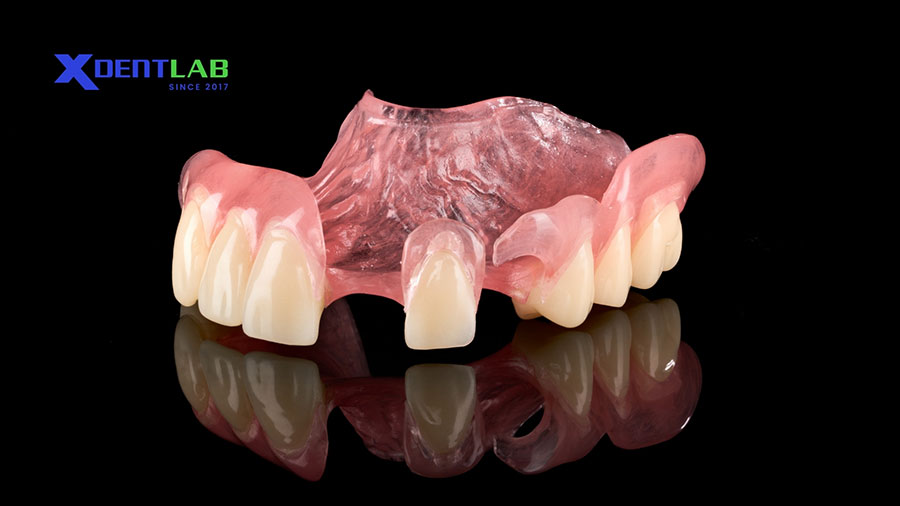
Nylon, scientifically known as polyamide (PA), is a family of thermoplastic polymers widely used in removable dental prosthetics. Its molecular structure is composed of amide (–CONH–) linkages, allowing strong hydrogen bonding between polymer chains. This high level of crystallinity gives nylon excellent strength, elasticity, and durability, making it one of the most popular materials for flexible dentures.
Nylon dentures are typically fabricated using the injection molding technique, where granulated polymer is heated, plasticized, and injected into a mold under pressure. This process ensures precise adaptation, smooth surface finish, and dimensional stability, qualities that are essential for both function and aesthetics.
Advantages
Nylon-based thermoplastics have gained popularity due to their unique combination of mechanical performance, biocompatibility, and visual appeal. Key advantages include:
High Strength and Flexibility: Nylon resists fractures and deformation, providing durability and comfort during mastication.
Excellent Fit and Retention: The injection molding process enables an accurate fit to the oral tissues, improving patient comfort and prosthesis stability.
Aesthetic Appearance: The material’s translucency and ability to be pigmented with stable dyes make it nearly invisible in the mouth, blending naturally with soft tissue.
Biocompatibility: Nylon contains no residual monomer, reducing allergic reactions and mucosal irritation.
Color and Surface Stability: Its non-porous and dense surface prevents discoloration and resists moisture absorption, maintaining hygiene and long-term aesthetics.
Gentle on Soft Tissues: Elastic clasps distribute chewing pressure evenly and do not abrade supporting teeth, making nylon suitable for patients with periodontal disease.
Easy Adaptation: Patients often adapt quickly to nylon dentures due to their lightweight and flexible nature.
Disadvantages
Challenging fabrication and finishing: Nylon has a high melting temperature and viscosity, which make the injection molding process more complex. Its flexibility also complicates trimming and polishing, often requiring specialized tools and experienced technicians. These technical challenges can increase production time and cost, especially for smaller labs without access to high-precision molding equipment. For many dental labs, this complexity can make in-house production of flexible dentures difficult to manage consistently. In such cases, collaborating with a specialized partner like XDENT LAB can be a practical solution. With expertise in nylon-based flexible partial dentures, XDENT LAB helps partner labs deliver high-quality results while optimizing efficiency and turnaround time.
Uneven load distribution and bone resorption: Because nylon is highly elastic, it may not transmit masticatory forces evenly across the denture base. This uneven load can cause localized pressure on the alveolar ridge, accelerating bone resorption and compromising long-term denture stability.
Difficult to repair or reline: Nylon does not chemically bond with conventional acrylic resins (e.g., PMMA). Once a denture is fractured or loosened, repair or relining is nearly impossible using standard techniques, often requiring complete remanufacture.
Cleaning and hygiene challenges: During polishing or cleaning with hard brushes and abrasive pastes, fine scratches can form on the nylon surface. These micro-defects trap microorganisms and plaque, leading to odor, mucosal irritation, and faster discoloration. Nylon dentures should therefore be cleaned with special non-abrasive agents and soft brushes. After one year of use, some patients report pressure discomfort near abutment teeth, likely caused by material deformation and reduced retention.
Loss of elasticity over time: Nylon’s flexible clasps tend to deform with prolonged use due to material fatigue, gradually reducing retention and stability.
Because of these drawbacks, nylon-based dentures are generally recommended as temporary or transitional prostheses rather than long-term restorations.
Examples of Nylon-Based Dental Materials
Valplast®, Flexite®, Duraflex®, TCS® Flexible Partials – USA
Flexy-Nylon® – Israel
T.S.M. Acetal Dental® – San Marino
Vertex ThermoSens® – Singapore
Flexyplast® – Germany
Polypropylene (PP) in Thermoplastic Materials in Dentistry
What is Polypropylene?
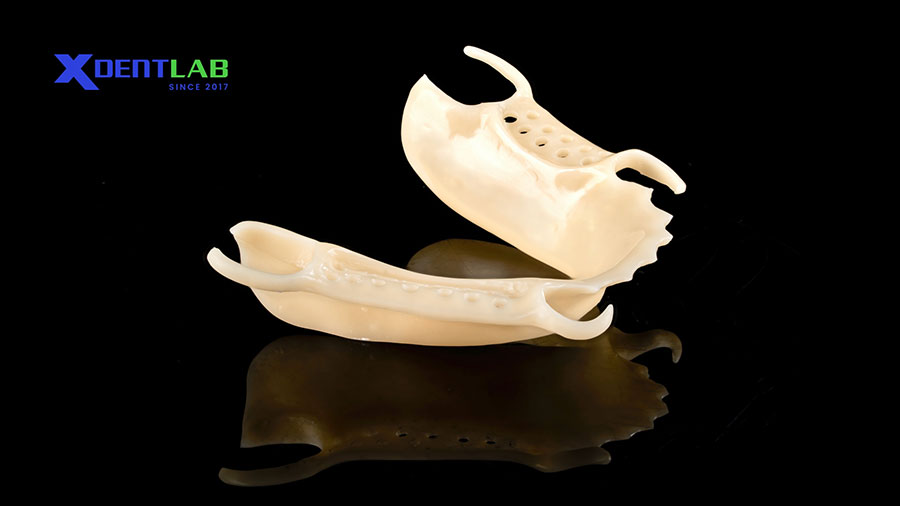
Polypropylene (PP) is a colorless, odorless thermoplastic polymer widely recognized for its chemical stability, low density, and resistance to moisture and wear. It was first introduced into dental prosthetics by Ukrainian scientist Vares E. Ya. in 1992, who developed a pressure casting method for fabricating dental bases using thermoplastic polymers such as polyethylene and polypropylene.
Compared to traditional acrylics, polypropylene softens at high temperatures, allowing it to be molded precisely into dental structures with excellent fit accuracy. It possesses greater strength than acrylates and exhibits superior wear resistance than polyamides, especially when produced with higher molecular weights. These properties make polypropylene a cost-effective alternative to nylon in the manufacturing of removable prostheses and orthodontic appliances.
Advantages
Polypropylene-based thermoplastics offer several benefits that make them attractive for dental laboratory applications:
High strength-to-weight ratio: The material is lightweight yet strong, ensuring comfort and durability in prosthetic use.
Excellent wear resistance: Demonstrates greater resistance to abrasion than polyamide-based materials, extending the lifespan of the prosthesis.
Precise adaptation: The casting process ensures accurate fitting of the prosthetic base to the oral tissues, improving stability.
Chemical and biological inertness: Free of monomers, catalysts, and reactive agents, polypropylene is biocompatible and non-toxic, reducing the risk of mucosal irritation or allergic reactions.
Dimensional stability and low moisture absorption: The material maintains shape and strength in the humid oral environment.
Cost-efficiency: Serves as a more affordable option compared to nylon without compromising basic performance for temporary or mid-term applications.
Disadvantages
Limited flexibility compared to nylon: Although stronger, polypropylene lacks the high elasticity of nylon. This results in a stiffer structure that may feel less comfortable and provide less cushioning for soft tissues.
Difficult to polish and finish: Polypropylene’s thermoplastic nature and chemical inertness make surface finishing and polishing more complex. Achieving a glossy, aesthetic surface requires specialized polishing tools and experience.
Lower aesthetic translucency: The material’s natural opacity and limited ability to be tinted reduce its cosmetic appeal compared to more translucent thermoplastics like nylon or polyamide blends.
Thermal sensitivity: Polypropylene softens at elevated temperatures, which can cause deformation during processing or prolonged use if temperature control is inadequate.
Examples of Polypropylene-Based Dental Materials
Proflex Clear Wire® – Dental Resources, USA.
NDFlex® – New Dental, Ukraine.
Lipol® – Developed by Prof. E. Ya. Vares, Ukraine (studied at Lviv Polytechnic University).
Polypropylene prostheses are biologically neutral and highly stable in the oral cavity, owing to the absence of monomers and reactive additives. Although it is not as flexible or translucent as nylon, polypropylene remains a practical, economical material for removable and partial prosthetic applications where strength and cost-effectiveness are priorities.
Polyoxymethylene (POM) in Thermoplastic Materials in Dentistry
What is Polyoxymethylene (POM)?
Polyoxymethylene (POM), also known as acetal resin, is a high-performance thermoplastic polymer characterized by its high crystallinity, strength, and excellent dimensional stability. Chemically, POM belongs to both the polyether (-C–O–) and polyacetal (-O–C–O–) family, giving it a unique balance of rigidity and toughness.
There are two primary forms of POM used in dentistry:
POM-H (homopolymer): produced from formaldehyde or trioxane monomers, offering higher crystallinity and mechanical strength.
POM-C (copolymer): contains small amounts of other cyclic ethers, which increase thermal and hydrolytic stability, making it more resistant to degradation.
Originally used in engineering applications such as gear wheels, bearings, and precision mechanical parts, POM’s excellent wear resistance, stiffness, hardness, and chemical inertness have made it a suitable alternative material for dental prosthetics, particularly for removable partial denture (RPD) frameworks.
Advantages
POM-based thermoplastics exhibit a combination of mechanical durability, aesthetic quality, and biocompatibility, making them highly valuable in modern prosthetic dentistry:
Tooth-colored and aesthetic: Available in multiple shades, allowing for natural-looking restorations without visible metal.
High mechanical strength: Exhibits stiffness, hardness, and impact resistance comparable to certain metal alloys.
Dimensional stability: Maintains shape with minimal shrinkage during processing, ensuring a precise fit.
Smooth, low-friction surface: Reduces plaque accumulation and enhances comfort in use.
Chemically resistant and low water absorption: Retains properties even in moist oral environments.
Hypoallergenic: Free from metal ions, residual monomers, and allergenic agents, ideal for patients sensitive to traditional materials.
Color stability: Resistant to staining and discoloration over time, maintaining a consistent shade throughout the prosthesis’s lifespan.
CAD/CAM compatibility: POM can be digitally milled, enabling accurate fabrication through modern CAD/CAM workflows.
Disadvantages
Opacity and limited translucency: Despite being tooth-colored, POM lacks translucency compared to materials like acrylic or nylon, giving it a more opaque appearance.
Limited flexibility: Its high rigidity, while beneficial for strength, can reduce patient comfort compared to more elastic materials such as nylon.
Low chemical bonding ability: POM’s inert surface makes it difficult to bond chemically with other materials (e.g., acrylic teeth or repair resins). This limits its use in multi-material restorations and complicates repairs or modifications.
Moderate wear resistance under heavy load: In patients with severe bruxism or high occlusal stress, POM restorations may experience early wear and require premature replacement.
Because of these limitations, POM is best suited for patients seeking metal-free, temporary, or esthetically discreet removable frameworks, rather than for permanent fixed restorations.
Examples of Polyoxymethylene-Based Dental Materials
Aceplast® – Israel.
Dental D® – Italy.
T.S.M. Acetal Dental® – San Marino.
Removable prostheses made from POM stand out for their rigidity, dimensional precision, low shrinkage, and resistance to solvents, often outperforming other thermoplastic polymers in long-term stability and mechanical strength. Due to its hardness, biocompatibility, and ability to achieve tooth-colored restorations without metal, POM represents one of the most advanced thermoplastic materials in dentistry, bridging the gap between function, strength, and esthetics.
Methyl Methacrylate (MMA)–Based Thermoplastic Materials in Dentistry
What is Methyl Methacrylate (MMA)?
Methyl methacrylate (MMA)–based thermoplastics, often known as monomer-free acrylic polymers, represent a modern evolution of traditional PMMA (polymethyl methacrylate). Unlike conventional acrylics used in denture bases, these materials contain no residual monomer, eliminating the common risks of allergic reactions, irritation, or cytotoxic effects.
In contemporary prosthodontics, MMA-based thermoplastics are widely used for both partial and complete removable dentures, allowing the fabrication of thin, lightweight, and metal-free bases while maintaining excellent strength and esthetics. Their processing through injection molding or CAD/CAM milling ensures precise fit and dimensional accuracy.
Advantages
Monomer-free composition: Eliminates residual monomer release, enhancing biocompatibility and reducing allergic or mucosal reactions.
High strength and rigidity: Provides good structural stability even with thin sections, supporting both partial and complete dentures.
Lightweight and aesthetic: Allows for natural appearance without the bulk of metal frameworks.
Thermal stability: Retains shape under oral temperature variations and resists deformation.
Smooth surface texture: Minimizes plaque accumulation and facilitates easy cleaning.
Good dimensional accuracy: Injection molding ensures precision fit with minimal polymerization shrinkage.
No unpleasant odor or taste: Improves patient comfort during long-term use.
Disadvantages
Lower impact resistance compared to nylon or POM: MMA-based thermoplastics can be more brittle under sudden stress.
Limited flexibility: The rigidity that enhances strength also reduces cushioning effect, making them less comfortable for patients with thin mucosa.
Difficult repairability: Once fractured, repairing MMA-based thermoplastics requires complete remanufacturing.
Less translucent: While aesthetic, they lack the translucency of polyamide-based materials.
Despite these drawbacks, MMA-based thermoplastics remain a reliable and safe option for patients sensitive to monomers, combining strength, hygiene, and biocompatibility for long-term removable prostheses.
Examples of Methyl Methacrylate–Based Dental Materials
Flexite M.R.® – USA
Asru-Free® – Israel
The.r.mo Free® – San Marino
Fusicril® – Italy
Polyan® – Germany
These materials represent an advanced generation of acrylic-based thermoplastics, combining the proven esthetics of PMMA with improved safety and comfort, reinforcing their role in modern dental laboratories.
Polyetheretherketone (PEEK) in Thermoplastic Materials in Dentistry
What is PEEK?
Polyetheretherketone (PEEK) is one of the newest and most promising thermoplastic polymers in modern dentistry. Although it has been widely used in medicine and engineering for decades, its application in dental prosthetics has gained attention only in recent years. PEEK is a semi-crystalline polymer composed of repeating molecular units containing three phenolic rings, two ether groups, and one ketone group, giving it outstanding mechanical and chemical stability.
Among all thermoplastic materials, PEEK has the highest melting point, approximately 335 °C, and exceptional resistance to heat and steam, withstanding short-term exposure up to 300 °C. It also exhibits excellent biocompatibility and a grayish-white, opaque appearance, which has made it an attractive alternative to metal frameworks for patients who prefer metal-free restorations or have allergies to metal and acrylic materials. PEEK’s mechanical properties closely resemble those of bone, dentin, and enamel, making it especially suitable for dental applications that demand both strength and elasticity.
Advantages
Bioinert and biocompatible: PEEK does not trigger allergic or inflammatory reactions and is safe for long-term intraoral use.
High mechanical performance: Excellent stiffness, strength, and wear resistance comparable to some metal alloys.
Lightweight and comfortable: PEEK frameworks are significantly lighter than cobalt-chromium, improving patient comfort.
Flexibility with strength: Offers a balanced modulus of elasticity that reduces stress on supporting teeth and minimizes fatigue fractures.
High thermal and chemical stability: Maintains dimensional accuracy even under autoclave sterilization or temperature fluctuations.
Hygienic design potential: Enables smaller, thinner, and more hygienic prostheses with reduced mucosal coverage.
CAD/CAM compatible: Can be milled from prefabricated blanks or shaped via injection molding for high precision and reproducibility.
Disadvantages
Limited esthetics: The natural grayish-white opacity of PEEK limits its use in visible zones. To improve appearance, manufacturers often coat or overlay PEEK with aesthetic composite resins.
Weak adhesion to other materials: Its inert and hydrophobic surface reduces chemical bonding with acrylic teeth or veneering materials, making mechanical retention (grooves, holes, or surface roughening) necessary.
Difficult bonding techniques: Optimal protocols for connecting PEEK with other dental materials are still under research.
Limited long-term data: Although early clinical results are promising, more evidence is required to confirm its long-term performance in removable prostheses.
Despite these challenges, PEEK remains one of the most advanced thermoplastic materials available today, combining metal-like strength with polymer-like lightness and biological safety. It is particularly well-suited for patients seeking metal-free, durable, and biocompatible restorations.
Examples of PEEK-Based Dental Materials
PEEK-Optima®, Motis®, Endolign®, PEEK-Classix® – Invibio
JUVORA Dental Disc® – Juvora Invibio Ltd.
VESTAKEEP-PEEK® – Evonik Industries AG
Bio XS® – Bredent
Dentokeep PEEK Disc® – NT-Trading
KetaSpire PEEK® – Solvay
PEEK’s balance of strength, precision, and bioinertness makes it a cornerstone in the ongoing evolution of thermoplastic materials in dentistry, bridging the gap between high-performance engineering polymers and aesthetic dental solutions.
Conclusion
The evolution of thermoplastic materials has redefined modern dental prosthetics, providing stronger, lighter, and more biocompatible solutions for clinicians and patients alike. Each material such as nylon, polypropylene, polyoxymethylene (POM), methyl methacrylate, and PEEK offers a distinct balance between flexibility, strength, and aesthetics, making the selection process increasingly vital for dental professionals.
As the industry moves toward greater digital integration, understanding the chemical structure, performance characteristics, and clinical applications of these thermoplastics becomes essential for achieving long-lasting, comfortable, and natural-looking restorations. Nylon and POM continue to play a central role in removable prosthetics, while emerging materials such as PEEK signal the future of high-performance, metal-free dentistry.
At XDENT LAB, we believe that responsible material selection and continuous research are the foundation of superior dental craftsmanship. By combining scientific knowledge, digital precision, and ethical practice, we aim to empower dental professionals worldwide to deliver restorations that are not only durable and beautiful but also safe, biocompatible, and future-ready.
Acknowledgement: This article draws insights from the research “Characteristics Of Thermoplastic Polymer Denture Base Materials For Prosthodontic Constructions” written by Poliukhovych et al. (2024); and “Polyoxymethylene as Material for Removable Partial Dentures – A Literature Review and Illustrating Case Report” written by Schierz et al. (2021).
XDENT LAB is an expert in Lab-to-Lab Full Service from Vietnam, with the signature services of Removable & Implant, meeting U.S. market standards – approved by FDA & ISO. Founded in 2017, XDENT LAB has grown from local root to global reach, scaling with 2 factories and over 100 employees.. Our state-of-the-art technology, certified technicians, and commitment to compliance make us the trusted choice for dental practices looking to ensure quality and consistency in their products.
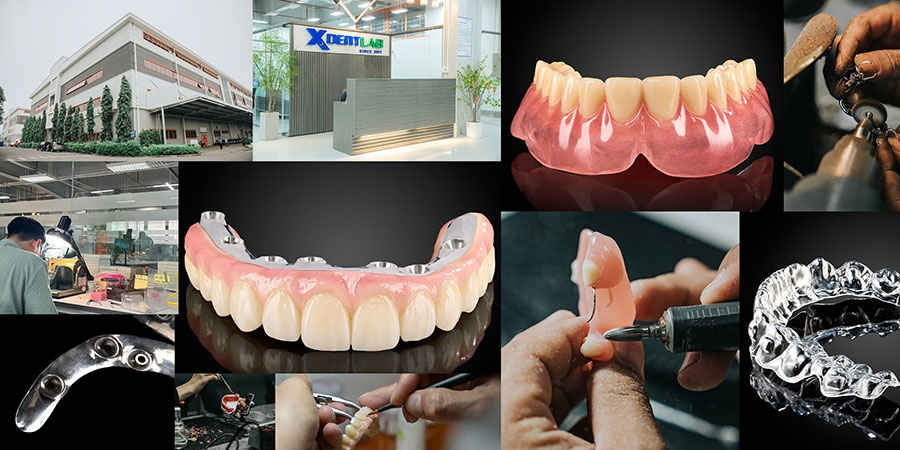
Our commitments are:
100% FDA-Approved Materials.
Large-Scale Manufacturing, high volume, remake rate < 1%.
2~3 days in lab (*digital file).
Your cost savings 30%.
Uninterrupted Manufacturing 365 days a year.
Contact us today to establish a strategy to reduce operating costs.
--------❃--------
Vietnam Dental Laboratory - XDENT LAB
🏢 Factory 1: 95/6 Tran Van Kieu Street, Binh Phu Ward, Ho Chi Minh City, Vietnam
🏢 Factory 2: Kizuna 3 Industrial Park, Can Giuoc Commune, Tay Ninh Province, Vietnam
☎ Hotline: 0919 796 718 📰 Get detailed pricing
Share this post:
Related Posts
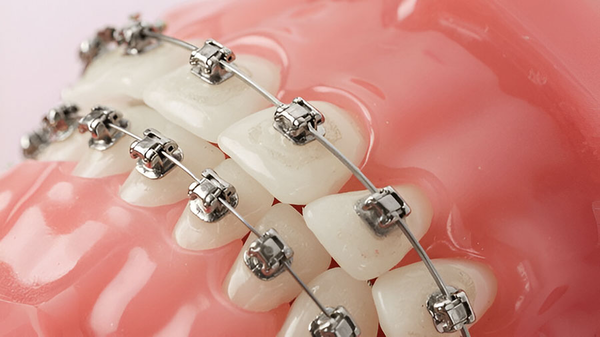
Discover the comprehensive overview of stainless steel orthodontic brackets, including their composition, manufacturing processes, mechanical properties, surface modifications, corrosion resistance, a...
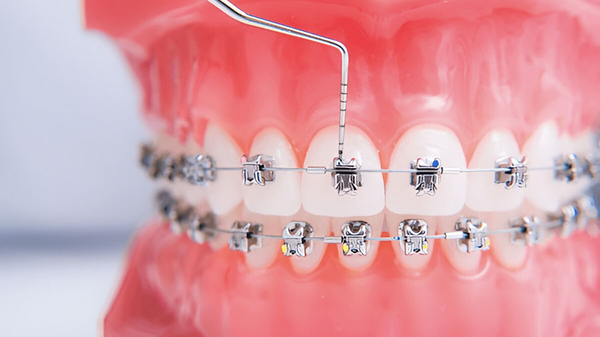
Learn about the main types of orthodontic bracket materials, including stainless steel, ceramic, polymer, and titanium. Discover their advantages, disadvantages, and clinical applications to help choo...
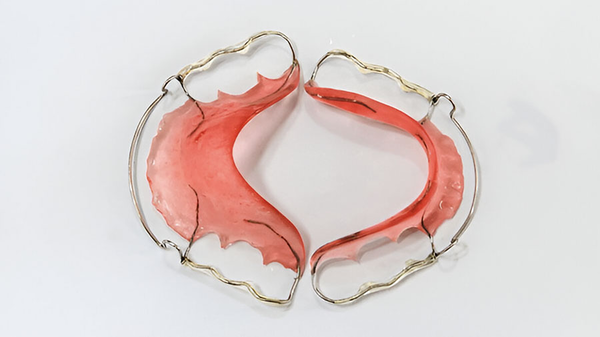
Discover the historical significance, advantages, and modern applications of gold orthodontic wires. Learn about their biocompatibility, corrosion resistance, and why they paved the way for advancemen...


